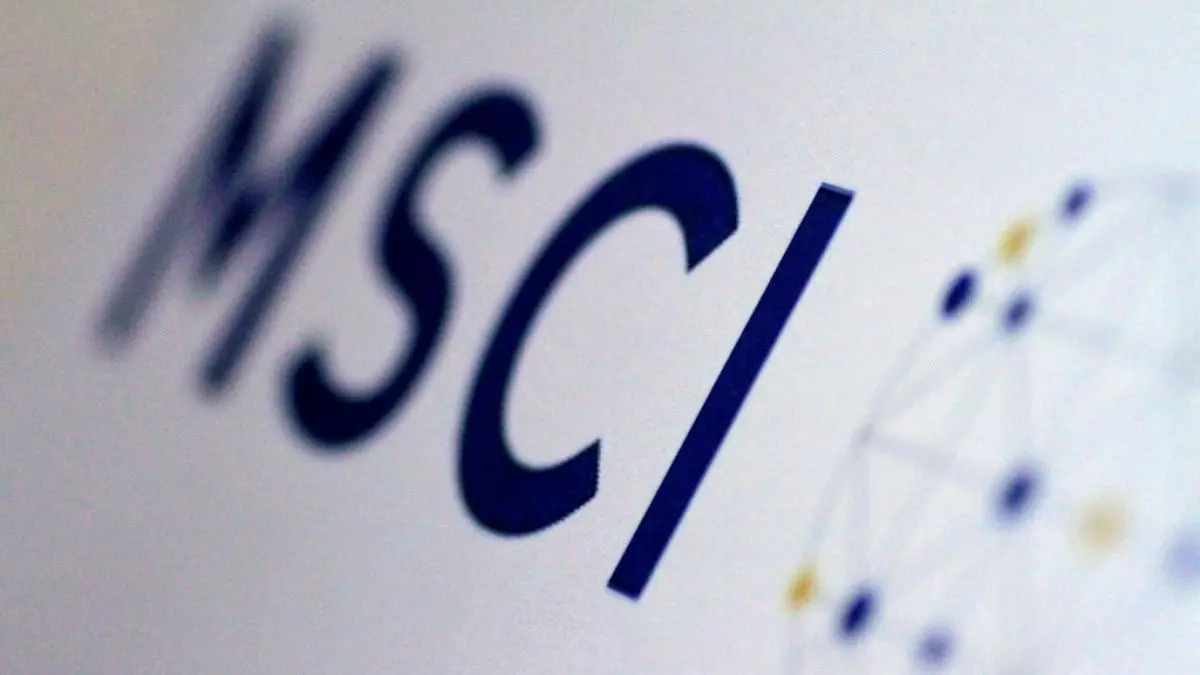Launched in 2024 under the D’Decor umbrella, a soft furnishings solutions player, Sansaar aims to offer a collection that seamlessly blends luxury with sustainability at its core. The brainchild of next-generation entrepreneurs Sanjana Arora , Co-founder, and Sarah Arora , Co-founder & Creative Director of Sansaar, the brand uses eco-friendly production methods and sustainable materials, such as recycled fibres, to craft collections that encourage conscious living. By the end of 2025, the brand plans to eliminate coal usage by transitioning to biomass fuels, achieve 95% water recycling, increase the use of sustainable products by 50% and replace all the diesel and petrol trucks with electric vehicles (EVs). #Pahalgam Terrorist AttackPM Modi-led 'Super Cabinet' reviews J&K security arrangementsPakistan's General Asim Munir is itching for a fight. Are his soldiers willing?India planning to launch military strike against Pakistan within 24 to 36 hours, claims Pak minister In a freewheeling chat, the entrepreneur duo discusses with ET Digital the key components of an environmentally responsible brand, technology and product innovations crucial for growth, and their ambitious plans for expansion in the future. Edited excerpts: Sanjana Arora, Co-founder, Sansaar The Economic Times Online (ET Digital): As next-gen entrepreneurs, what aspects do you want to bring in to Sansaar as a brand? Sanjana Arora: As the next generation stepping into an established legacy, our focus was clear: to build something with intent, both in design and in purpose. Sansaar became that space. It gave us the opportunity to lead with a fresh perspective, to question legacy models and ask, “What does conscious luxury look like today?” That most important factor is to ensure that ‘sustainability’ isn’t a checklist; it is the starting point. From materials to manufacturing to packaging, every decision was made with intention. While it’s still early days, our biggest contribution so far has been reimagining what a home-grown Indian furnishings brand can look and feel like—without compromising on soul or scale. Live Events ET Digital: What are the targets you have for the brand going forward? How has the response been since its launch? Sanjana Arora: The response has been incredibly encouraging. From the outset, we have built Sansaar with clarity of purpose, focussing on design integrity, product quality and a brand narrative that feels meaningful. That intentionality has resonated, and it’s clear there is a strong appetite for Indian luxury that is both rooted and relevant. Sansaar has grown 35% above expectations for the first year. We are already present in 450 stores across India and plan on expanding to 100 more this year itself. We have even expanded our manufacturing capacity by 1.5 lakh sq. ft for Sansaar. Our goal is to grow Sansaar into a Rs 500-crore brand over the next three years. We are expanding our product categories, strengthening our offline presence and building a footprint in global markets. Alongside that, we are committed to pushing our sustainability targets by increasing water recycling to 90%, shifting fully to renewable energy, phasing out coal entirely, and moving to an all-EV transport fleet. ET Digital: Sustainable design is an aspect that you focus a lot on as far as Sansaar is concerned. Tell us more about it and the kind of consciousness being seen among Indian consumers for such offerings. Sanjana Arora: For us, sustainability isn’t a feature; it’s the foundation. At Sansaar, the goal has always been to create products that are both aesthetically refined and environmentally responsible. That means using natural materials, minimising waste and designing with longevity in mind. What is exciting is that Indian consumers are becoming increasingly conscious. They are paying attention to provenance, process and impact. Especially among younger buyers, there is a clear shift toward thoughtful consumption. People want to know the story behind what they bring into their homes. Our aim is to meet that awareness with authenticity. To make sustainability not just feel good but look beautiful. The company leverages advanced systems like robotic warehouses for managing their supply chain, which helps them track materials, optimise inventory, and maintain efficiency. ET Digital: What are some of the emerging trends in the home furnishings market in India as well as globally? Sanjana Arora: The home furnishings market is undergoing several shifts, both in India and globally. There is a clear movement towards clean, minimalist design with spaces that prioritise calm and simplicity. Sustainability continues to gain ground with a growing demand for eco-friendly materials and responsible production processes. Another trend we are seeing is the rise of smart textiles where functionality blends seamlessly with aesthetics, offering solutions like durability and energy efficiency. These trends reflect a shift in consumer priorities toward creating functional, conscious, and stylish living spaces. ET Digital: How much is tech development woven into your supply chain strategies? What are some of the techniques working well for the brand? Sanjana Arora: At Sansaar, technology enhances our operations by helping us forecast demand accurately and reduce waste. Using data-driven tools, we align production with market needs, ensuring efficiency and sustainability in every batch. We also leverage advanced systems like robotic warehouses for managing our supply chain, which helps us track materials, optimise inventory, and maintain efficiency. This not only supports our sustainability goals but also ensures that we deliver consistent, high-quality products. For us, technology is a tool that enhances our processes, making our production smarter and more responsive while staying true to our core values of craftsmanship and conscious luxury. ET Digital: What is the road map for the company in the next five years? Sanjana Arora: In the next five years, our goal is to position Sansaar as a leader in conscious luxury on the global stage. We aim to grow into a Rs 500-crore brand, with expansion plans focussing on both digital and offline channels. Our key priorities include launching flagship experience centres and expanding internationally, with Sansaar globally being available soon. Beyond financial targets, our vision is to make Sansaar the go-to brand for those seeking a home that aligns with their values and lifestyle. It is also extremely important to us that we do not compromise on luxury when we are talking about sustainability. Sarah Arora, Co-Founder & Creative Director, Sansaar ET Digital: Which are some of your key export markets and some of the best-selling categories in such markets? Are you also looking at any new geographies? Sarah Arora: Our key export markets are the UK, the US, Europe, and the UAE. In these regions, our curtains and sheers have been top sellers, driven by our focus on design-forward solutions, attention to detail, and adaptability to market needs. While we are always exploring new opportunities, our focus is on nurturing our existing relationships. We believe in building long-term partnerships, where trust and consistent performance lead to meaningful growth. ET Digital: How much of your revenue comes from exports, and how much from the domestic market? What is your target for both, and how well are you on course to achieve the same? Sarah Arora: Currently, our revenue is split evenly between exports and the domestic market, with about 50% coming from each market. Exports primarily follow a B2B model, while our domestic focus is on B2C. Moving forward, we aim to grow both segments, maintaining this balance. Our target is to expand our global presence while establishing Sansaar as a household name in India, much like D’Decor. We are confident that with our ongoing investments in quality, design innovation, and customer experience, we are on the right path. ET Digital: What are some of the tech and product innovations done by Sansaar and D’Decor to gain a competitive edge in the market? Sarah Arora: At Sansaar and D’Decor, innovation is central to how we operate. We have streamlined our processes with fully automated systems, from our robotic warehouse to automated cutting and packing, ensuring speed and precision. We are also pushing boundaries with our R&D and IT investments, constantly enhancing our supply chain. On the product front, we are introducing innovative solutions like stain-resistant fabrics, sustainable options, and flame-retardant finishes. Our vertical integration allows us to experiment right from the yarn stage, giving us a unique edge. With 80,000 metres of fabric dispatched daily, our ability to scale innovation sets us apart in the market. The company draws inspiration from global design trends but tailors them to suit the unique aesthetic preferences across India’s diverse regions. ET Digital: The company claims to have designs that are globally inspired yet locally relevant. Please give some examples that reflect this philosophy. Sarah Arora: We draw inspiration from global design trends but tailor them to suit the unique aesthetic preferences across India’s diverse regions. For example, our modern minimalist fabrics work well in metropolitan areas, while we design more intricate, traditional patterns to resonate with regional tastes, especially in places with strong cultural influences. This approach ensures that we are not just offering globally recognised designs, but ones that resonate on a deeper, cultural level. We stay connected to India’s regional identity while integrating international quality standards, making our products both aspirational and accessible to a wide range of consumers across the country. ET Digital: Given the upheaval concerning the US tariffs, do you see any impact on your export portfolio and your purchases in the domestic market? Sarah Arora: The US tariff changes have created some ripples, but our diverse export strategy, spread across multiple regions, has helped shield us from major impact. By not relying too heavily on any single market, we have maintained a balanced portfolio. Interestingly, we also see more manufacturing coming our way, as global partners seek reliable and quality-driven alternatives. Domestically, we haven’t seen any major shifts in consumer behaviour, with demand for quality and value-driven products remaining strong. We are keeping a close watch on global trends and staying agile, adjusting our strategies as needed to stay ahead. ET Digital: How important is user-generated content for building unique brand narratives? What is your strategy for the same? Sarah Arora: User-generated content (UGC) is reshaping how brands interact with consumers. It’s no longer just about pushing out marketing messages but letting real customers tell their stories. Social media has played a huge role in this shift towards brand-building, making the relationship between brand and consumer more interactive and direct. When customers share their décor stories, they become co-creators in shaping the brand’s narrative. It’s a powerful way to show off a product’s versatility and emotional value without the usual polished ads. For us, encouraging genuine conversations through UGC builds trust, fosters community and creates more authentic connections with our audience.












